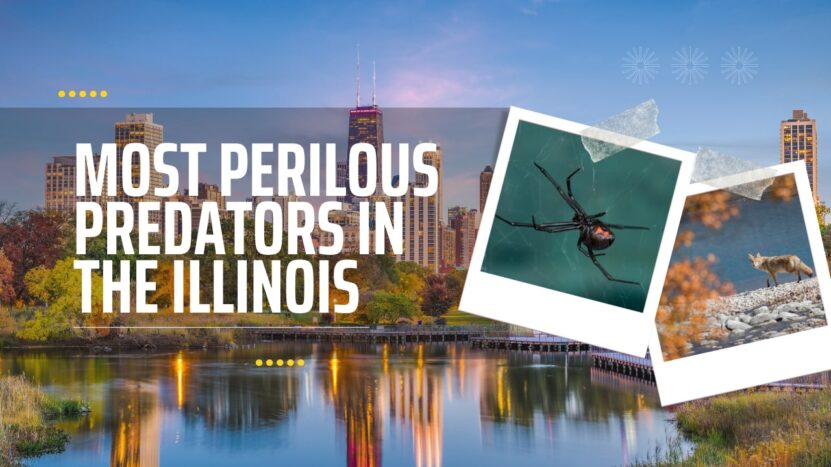As serene and inviting as Illinois may seem, the Land of Lincoln has its fair share of dangers lurking in the shadows. While it may be known more for its sprawling cornfields and bustling cityscapes, Illinois is also home to an array of wildlife that can pose a significant risk to those who cross their paths.
This article will walk you through the top 20 most dangerous animals in Illinois, enlightening you about their behaviors, characteristics, and deadly potentials. So, strap in, and let’s embark on this wild ride.
1. Timber Rattlesnake

The timber rattlesnake earns its place at the top of our list for being the most venomous snake in Illinois. Known for their distinctive rattling sound, these snakes can grow up to 5 feet long and are typically found in the southern and western parts of the state. While they’re not typically aggressive, a threatened timber rattlesnake will not hesitate to strike, injecting a potent cocktail of venom that can cause severe pain, swelling, and in rare cases, death.
2. Northern Copperhead
The northern copperhead, another venomous serpent, is a force to be reckoned with in the Illinois wilderness. Named for its copper-red head, these snakes are most active at night and are known for their aggressive nature when disturbed. Their venom, while not as potent as the timber rattlesnake, can still cause significant harm, including intense pain, tissue damage, and in severe cases, organ failure.
3. Eastern Massasauga Rattlesnake
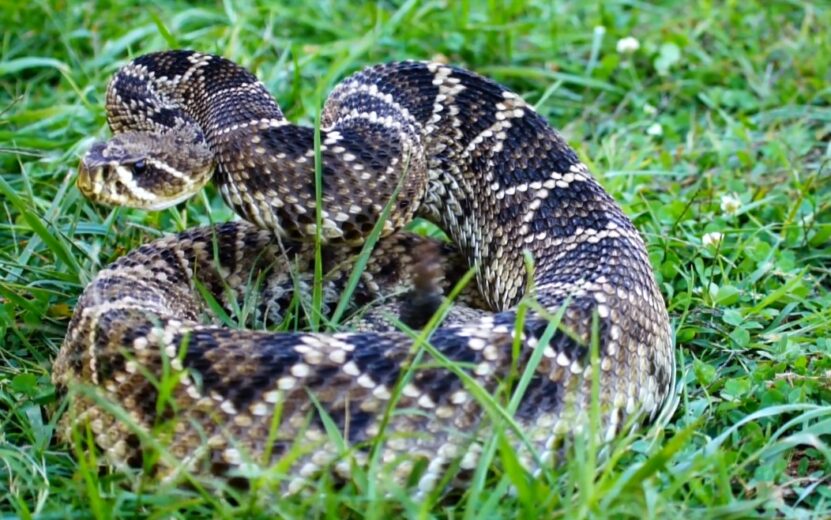
The eastern Massasauga rattlesnake is the only venomous species found in the northern part of Illinois. It has a small size compared to its counterparts, measuring only about 2 feet, but its bite is just as deadly. The snake prefers wet environments, so tread carefully when you’re exploring the wetlands of Illinois.
4. Coyotes
While not as lethal as the rattlesnakes, coyotes earn their spot on this list for their increasing encounters with humans due to habitat loss. These canine predators are found statewide, and while they are typically shy and avoid humans, they can become aggressive if they feel threatened or cornered. An encounter with a coyote can result in severe injuries, especially if they are rabid.
5. Brown Recluse Spider
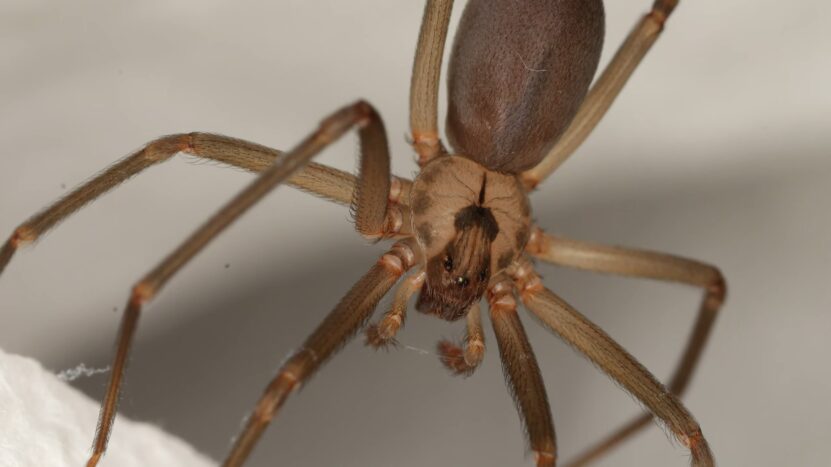
The brown recluse spider, one of the most venomous spiders in North America, is found throughout Illinois. It’s identified by the violin-shaped marking on its back. While they’re not typically aggressive, they will bite when threatened or disturbed, delivering venom that can cause necrotic skin lesions and severe systemic reactions in rare cases.
6. Black Widow Spider
Another eight-legged critter on our list, the black widow spider, is known for its highly toxic venom. Found mostly in the southern parts of Illinois, they’re recognized by their glossy black bodies and the distinctive red hourglass shape on their abdomen. A bite from a black widow can cause severe muscle pain and cramping, abdominal pain, weakness, and tremors.
7. American Alligator
While not native to Illinois, American alligators have been spotted in the state’s waterways, likely as a result of illegal pet releases. These enormous reptiles are highly aggressive and have one of the strongest bite forces in the animal kingdom. While encounters are rare, they can result in serious injuries and even death.
8. Striped Bark Scorpion
The striped bark scorpion, while relatively small, packs a punch with its venomous sting. This nocturnal critter is primarily found in the southern regions of Illinois. While their sting is usually not life-threatening, it can cause intense pain, swelling, numbness, and in rare cases, severe allergic reactions.
9. Ticks
Ticks may seem small and harmless, but they carry a deadly secret. These tiny parasites are carriers of various diseases, including Lyme disease, which is a serious condition that can lead to neurological problems if left untreated. Ticks are common in the wooded and grassy areas of Illinois, so be sure to check yourself thoroughly after any outdoor activities.
10. Deer
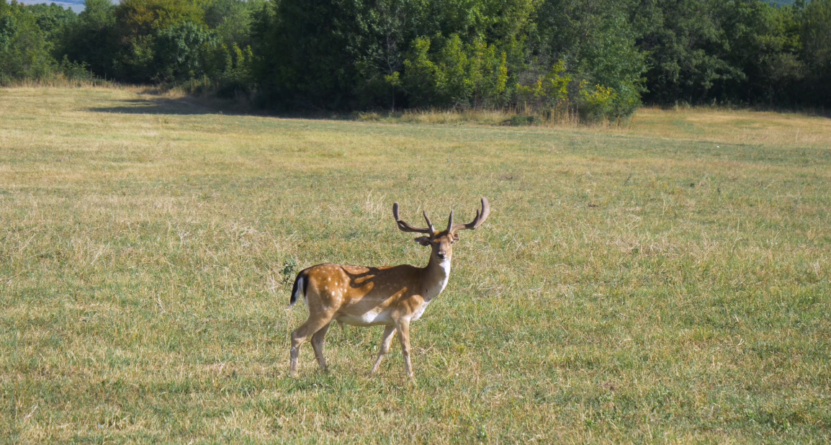
At first glance, you might wonder how deer made it onto a list of dangerous animals. However, in Illinois, they are one of the leading causes of vehicle accidents, leading to serious injuries and fatalities each year. Deer are especially active during dawn and dusk, and in the fall during their mating season, they’re more likely to venture onto roads.
11. Bobcats
After decades of population decline, bobcats have made a successful comeback in Illinois. These elusive feline predators, while typically shy and not a threat to humans, can become dangerous when cornered, threatened, or rabid. Although bobcat attacks on humans are extremely rare, they have been known to prey on livestock and pets.
12. Black Bears

Although not a common sight, black bears have been making a return to Illinois in recent years, with sightings primarily in the state’s western regions. A black bear is generally more afraid of you than you are of it. However, if it feels threatened, especially if it’s a mother with cubs, it can become very aggressive. It’s essential to give these creatures plenty of space.
13. Bald-Faced Hornets
These large, distinctive insects, identified by their white and black coloring, build sizeable, paper-like nests in trees or under eaves. Bald-faced hornets are known for their aggressive defense of their nest, and their sting can be extremely painful. Additionally, some people may have severe allergic reactions to their venom.
14. Wild Boars
Wild boars, also known as feral hogs, have been spotted in various parts of Illinois. These animals are not native to the area and pose a significant threat to the local ecosystem. They are also dangerous to humans, especially when cornered or if a female boar (sow) is protecting her young. A charging boar can inflict severe injuries with its sharp tusks.
15. Cougar
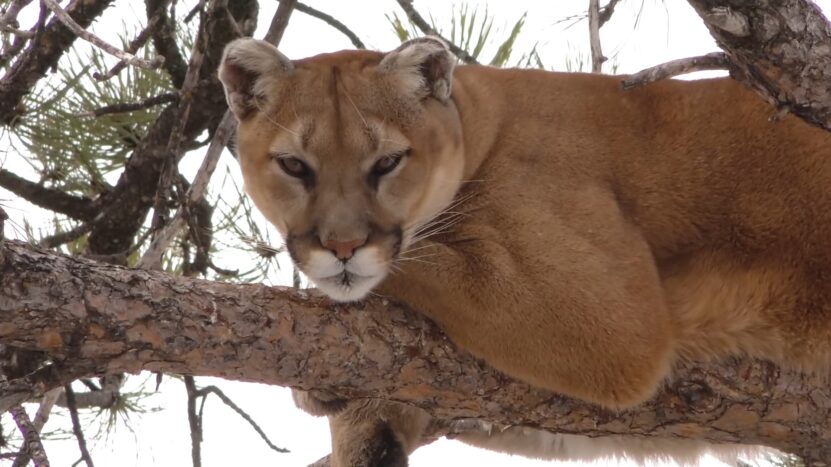
Also known as mountain lions or pumas, these large cats are not common in Illinois, but there have been occasional confirmed sightings. Cougars are extremely powerful predators capable of inflicting severe injuries if they decide to attack, which is generally rare and often linked to them feeling threatened or cornered.
16. Yellow Jackets
These wasps, identified by their distinctive yellow and black bodies, are common throughout Illinois. Yellow jackets can become aggressive defenders of their colony, and unlike bees, they can sting repeatedly. This can result in painful welts, and for those allergic to their venom, a single sting can trigger a severe allergic reaction.
17. Muskrats
While muskrats are generally not dangerous to humans, they can become aggressive when cornered. Their sharp teeth can deliver painful bites, and they are also known carriers of various diseases and parasites that can be harmful to humans and pets.
18. Raccoons
Raccoons are common in both rural and urban areas of Illinois. While they are usually more of a nuisance than a danger, they can become aggressive if cornered or if they are rabid. They’re also known carriers of various diseases, including rabies and raccoon roundworm, which can be harmful to humans and pets.
19. Snapping Turtles
Found in various water bodies across Illinois, snapping turtles can pose a risk due to their powerful jaws and long necks. While they usually avoid humans, they can deliver a strong bite if threatened or handled.
20. Red Foxes
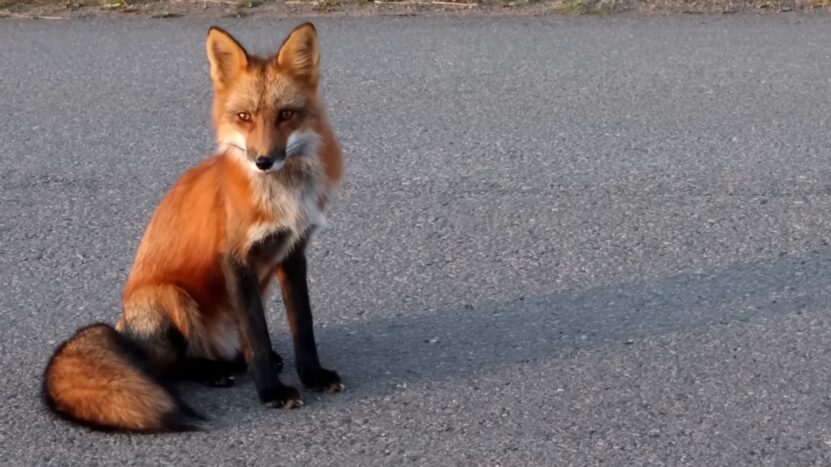
While red foxes are typically shy and avoid humans, they can pose a threat if they are rabid or feel threatened. They can carry diseases like rabies and mange, which can be transmitted to pets.
Closing Thoughts
Educating ourselves about the wildlife we share our state with is the first step to ensuring our safety and theirs. It is also essential to remember that many of these creatures play vital roles in our ecosystem. For instance, the venomous snakes control rodent populations, while the deer help spread seeds through their droppings, aiding in plant diversity.
Even though these animals can be dangerous, it doesn’t mean that we should fear them. Instead, we should respect them and learn how to coexist safely. After all, they were here first. And who knows, the more you learn about them, the more you might come to appreciate their unique beauty and the essential roles they play in our environment.
So, the next time you plan a hike or a camping trip in the beautiful state of Illinois, keep these facts in mind. Respect the signs that indicate the presence of wildlife, keep your distance, and remember – we are guests in their homes. Stay safe, stay informed, and enjoy the wild side of Illinois!

